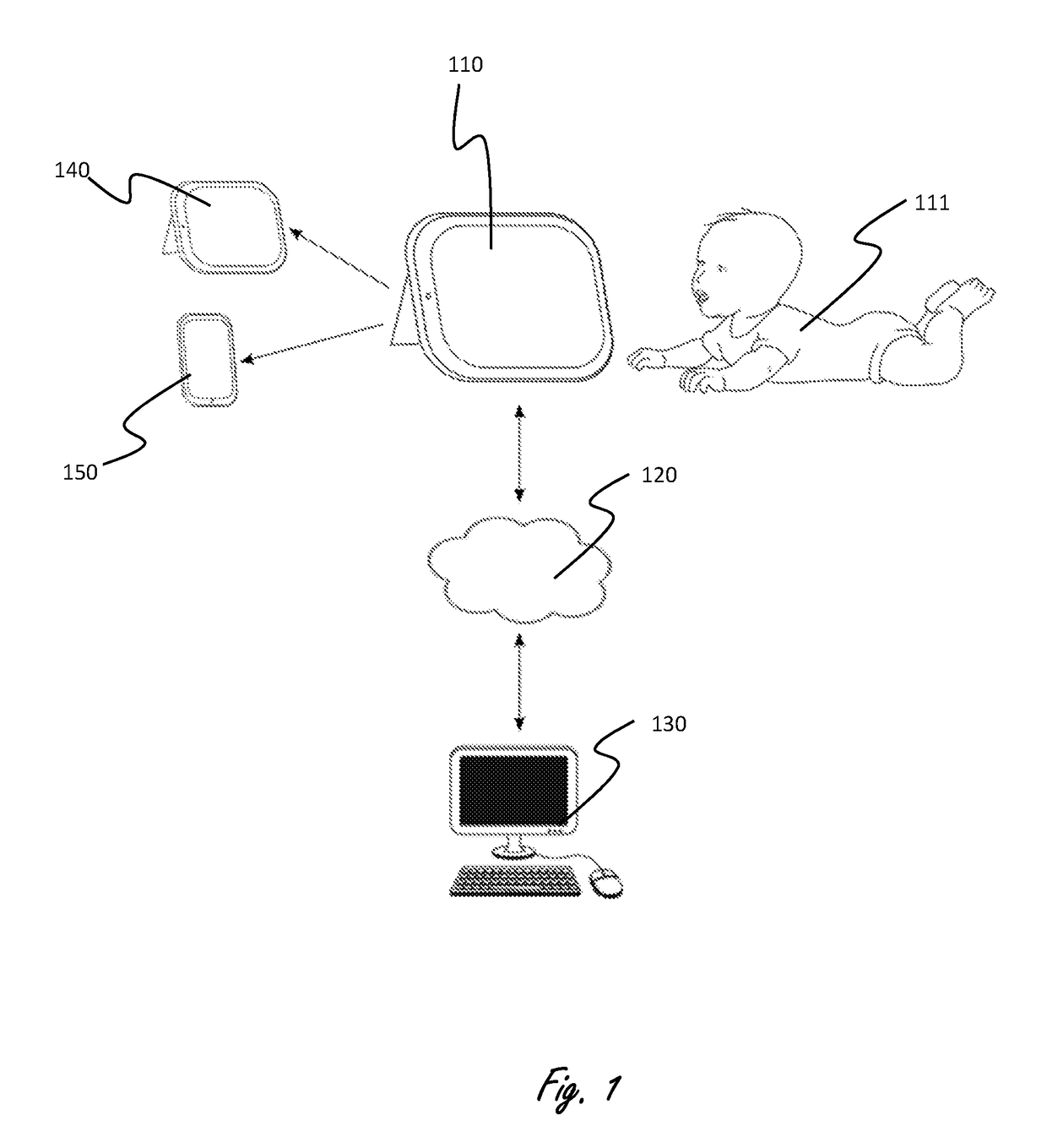Systems and methods of monitoring and encouraging exercise in infants
a technology applied in the field of monitoring and encouraging activity in infants, can solve the problems of no means for medical tracking, further delays in strengthening neck and back muscles, and delay in motor and physical development, and achieve the effect of monitoring and encouraging exercise in infants
- Summary
- Abstract
- Description
- Claims
- Application Information
AI Technical Summary
Benefits of technology
Problems solved by technology
Method used
Image
Examples
example 1
Session and Interface
[0150]An exercise session is composed of a series of interactive movies displayed continuously. The movies and content (audiovisual stimulation) is selected by the user (usually the parent or healthcare personnel) from the menu of available and relevant contents in the application. The interface may recommends the user of appropriate movies and content according the developmental age of the infant, diagnosed medical conditions (such as Torticollis) and according to past performance information of the infant with respect to the stimulation.
[0151]An exercise session comprises:[0152]a. Activating a computer executable program by pressing a “perform exercise” link.[0153]b. Choosing video content and voicing stimulation.[0154]c. Positioning of the infant in front of the display screen. The interface presents a graphic guide for the user that recommends on the infant's most efficient practice position. It also guiding the user to position the optical sensor in a way t...
example 2
/ or Audio Content Presented to the Infant
[0160]At each exercise session the infant is subject to three kinds of stimulation: visual stimulation, preferably in the form of some animation; audiovisual stimulation (i.e. audio stimulation accompanied with the visual stimulation), preferably in the form of the animation with music used as a soundtrack in various parts; and audio stimulation pertaining to the performance information received by analyzing data of the infant's engagement with the display device, preferably in the form of vocalizations. The content of the stimulation is determined by a user (e.g. parents, a caretaker) or by predetermined protocols taking into consideration of parameters such as the infant's age, progress of the infant, the infant's performance information, infant's medical conditions, previous exercise session et al. Each content contains a combination of the three stimulation. For each exercise session, the user choose a number of (e.g. four) audiovisual co...
example 3
d Timings of the Application
[0161]The predetermined protocols for setting stimulation types is also subjected to a basic instructions algorithm determining general operating features, such as minimal transition times between different stimulations, various alerts and notifications regarding the usage of the display device when the system no longer detects a participant, or when performing basic operations such as starting the application, ending it or using any of the standard features set by an application. For example, the basic algorithm sets a minimal time period for transitioning between different visual animations contents, in order to provide the infant with an enjoyable experience and avoid over-stimulation. Another example would be predetermined time frame for detecting facial recognition after losing one, after which if no recurring recognition is provided, the system will terminate the session.
PUM
 Login to View More
Login to View More Abstract
Description
Claims
Application Information
 Login to View More
Login to View More - R&D
- Intellectual Property
- Life Sciences
- Materials
- Tech Scout
- Unparalleled Data Quality
- Higher Quality Content
- 60% Fewer Hallucinations
Browse by: Latest US Patents, China's latest patents, Technical Efficacy Thesaurus, Application Domain, Technology Topic, Popular Technical Reports.
© 2025 PatSnap. All rights reserved.Legal|Privacy policy|Modern Slavery Act Transparency Statement|Sitemap|About US| Contact US: help@patsnap.com



